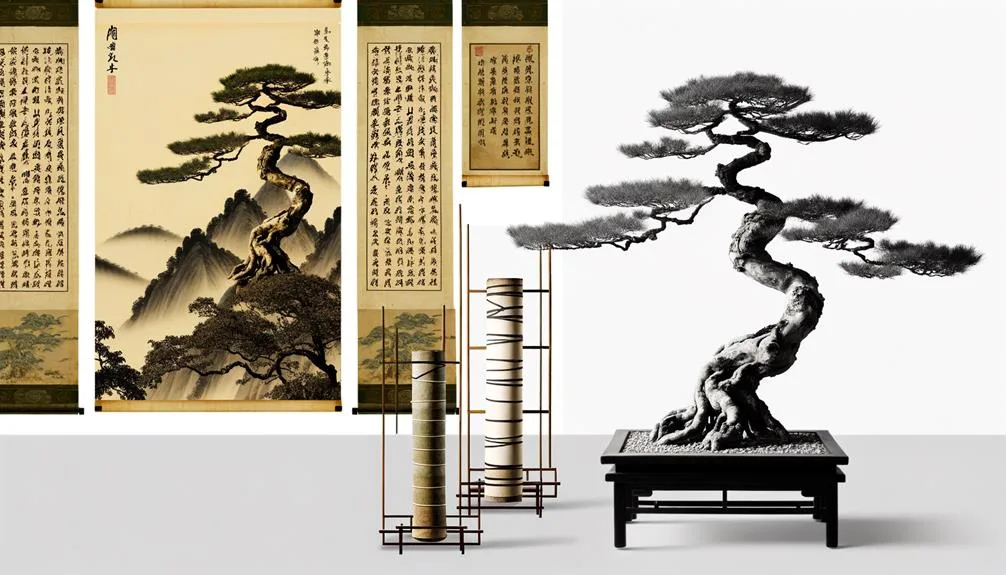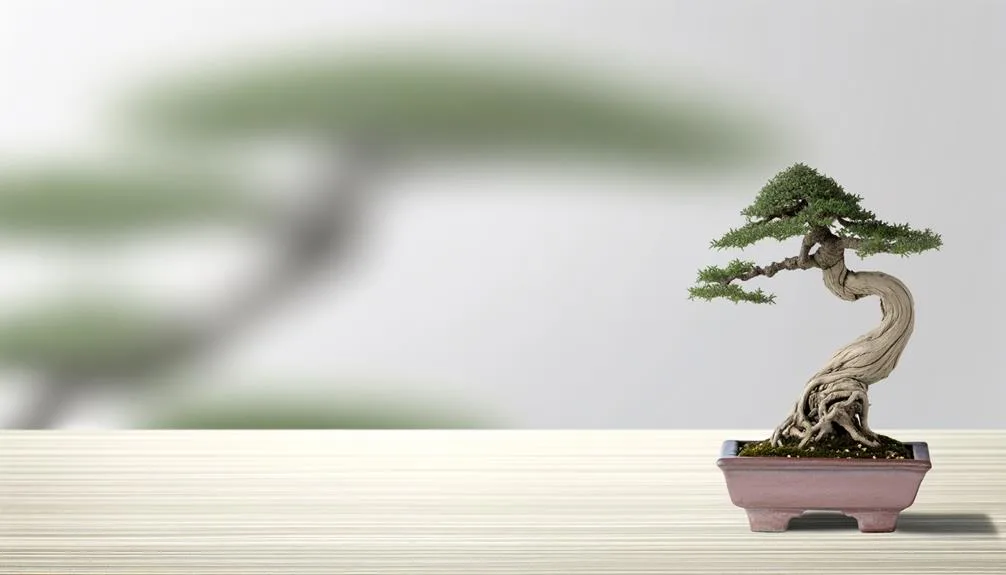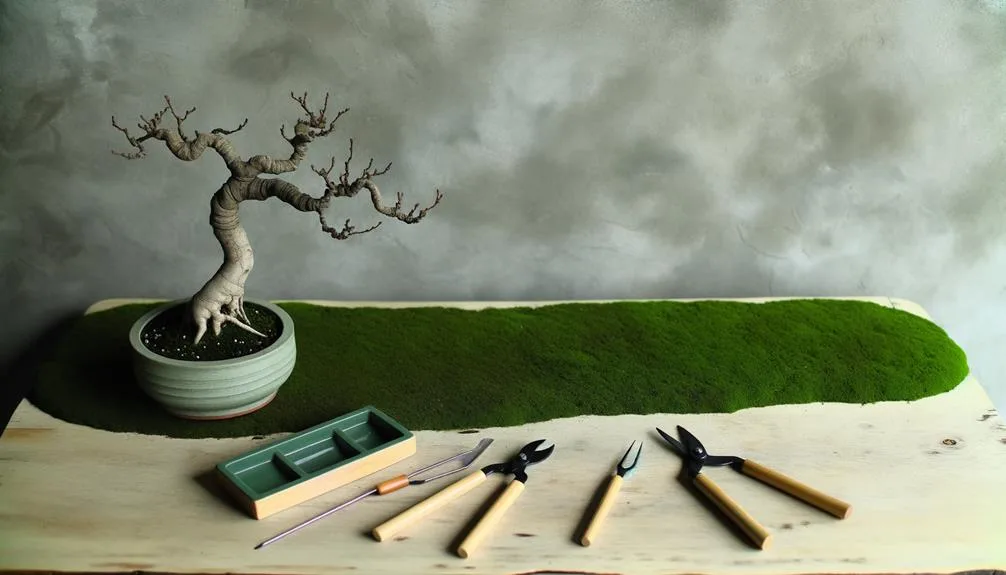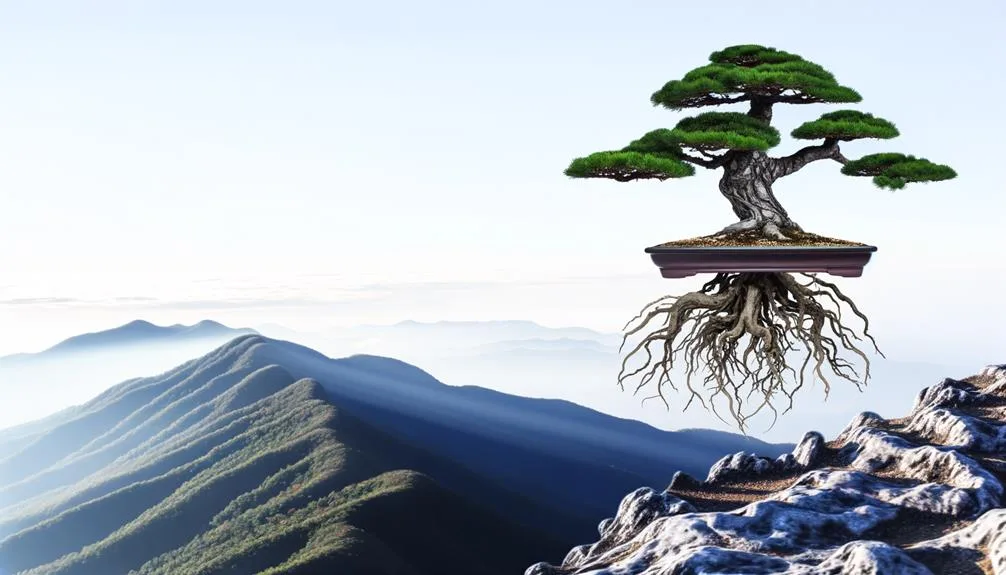The Literati Bonsai style, also known as “Bunjin” or “Windswept” style, is a distinctive and awe-inspiring branch of the bonsai artistry. Unlike the more conventional bonsai styles that aim for symmetry and balance, Literati Bonsai embraces the rugged, untamed beauty of nature. It draws inspiration from the windswept, gnarled trees that have weathered the test of time in challenging environments, often perched on cliffs or rocky outcrops.
In this article, we will not only scratch the surface but also venture deeper into the enchanting artistry of Literati Bonsai. As an ardent bonsai enthusiast, I’ve had the incredible privilege of immersing myself in this world. My fascination with its intricate forms, captivating stories, and timeless allure has grown into a passionate journey, and I’m thrilled to share the wealth of knowledge and insights I’ve gathered along the way.
So, join me as we explore the world of Literati Bonsai, where rugged beauty meets timeless elegance, and each tree tells a story of resilience, grace, and enduring charm. Along the way, we’ll uncover the history, techniques, and the profound connection this art form forges between nature and the human spirit. Prepare to be captivated by the stories of these living masterpieces, each with its unique character and personality, sculpted over years, if not decades.
Key Takeaways for the Literati Bonsai Style
- Literati bonsai embodies resilience and age through its slender, elegant trunk and sparse foliage.
- The style encourages freedom and expression, with asymmetrical and irregular branches mirroring the beauty of nature’s balance and harmony.
- Literati bonsai design involves storytelling and contemplation, bringing deeper meaning to the work.
- Suitable tree species for literati bonsai include conifers like pines and junipers, as well as deciduous varieties.
Literati Bonsai Characteristics
Observing the characteristics of a Literati bonsai reveals a slender, elegant trunk with sparse foliage, symbolizing resilience earned through age. This distinct presentation is specific to the Literati style, a bonsai method that embodies a sense of freedom and expression.
Your knowledge of Literati bonsai traits will deepen as you learn about their origins. Profoundly inspired by Chinese brush painting and poetry, Literati bonsai seeks to depict the struggle and endurance of trees in nature. Have you observed how the branches are asymmetrical and irregular? That’s on purpose, mirroring the beauty of nature’s balance and harmony.
The Literati style encourages you to engage with the tree’s history and its natural surroundings, promoting contemplation and storytelling through its design. You’re not just observing a tree; you’re experiencing a narrative of survival and resilience.
Appropriate tree species for the Literati bonsai encompass conifers such as pines and junipers, along with deciduous varieties displaying unique trunk movements and graceful qualities. By grasping Literati bonsai traits, you’re progressing towards mastering this refined art form.
Keep in mind, each Literati bonsai represents a tale of resilience, individuality, and age.
Techniques in Literati Bonsai Design
Now, let’s move on to the techniques used in Literati Bonsai design.
You’ll learn how to craft aesthetic elements, and we’ll cover the ins and outs of detailed pruning.
Mastering these techniques will help you create a beautiful, flowing Bonsai tree that embodies the Literati style.
Crafting the Aesthetic Elements
When shaping the aesthetic aspects of Literati Bonsai, the goal is to generate an impression of grace, elegance, and irregularity in the tree’s shape. Moving towards this Bunjin Bonsai style can be seen as a break from traditional norms.
Extreme pruning molds the tree, placing increased emphasis on shape rather than on root development or size.
Regulated cutting accentuates space, allowing the tree’s irregularity to stand out.
Opt for appropriate trees such as junipers, pines, or those exhibiting intriguing trunk movements.
These methods are about more than just shaping visual elements; they also involve telling a story. The backstory of Literati Bonsai, deeply ingrained in Japanese art and shaped by Chinese literature and painting, brings a deeper meaning to your work.
The key point is to produce a visually striking shape.
Detailed Pruning Techniques
Detailed pruning techniques are now employed to refine the looks of your Literati Bonsai, once its overall shape has been formed. With your bonsai tools on standby, start by selectively trimming branches to evoke a natural, windswept aesthetic. This method highlights aspects of irregularity and elegance.
Excise unnecessary parts and surplus branches, making the tree’s inherent beauty the primary focus. Contemplate the area surrounding the bonsai, as this plays a significant role in achieving the literati style. Maintain a careful approach in your clipping and pruning to shape a distinctive and visually striking form.
The objective is to bring forth an unconventional beauty via meticulous pruning techniques. With perseverance and time, you’ll become proficient in the art of designing a Literati Bonsai, highlighting the untamed charm of this style.
History and Influence of Literati Style

You might wonder how the Literati style came about.
It’s intriguing to see how different influences shaped this unique form of bonsai.
As we move along, you’ll see how this style evolved over time, leaving a significant impact on bonsai lovers all around the globe.
Origins of Literati Style
Let’s examine the roots of the Literati Style, which was first seen in Japan during the late Tokugawa shogunate and the early Meiji era. This style of bonsai, known as Bunjin, marked a significant shift from traditional bonsai standards and drew significant inspiration from Japanese Bunjin artists like Sanyo, Chikuden, Taigi, and Chokunya.
Here are some notable facts:
- The roots of literati style are linked to Nansoga painting from the Chinese Song dynasty.
- Bunjin bonsai signified a deviation from the standard bonsai practices.
- The style continues to motivate bonsai lovers around the world.
You are now equipped to appreciate the rugged elegance of the Literati style bonsai with a more profound comprehension of its roots.
Influences on Literati Bonsai
Examining the influences on Literati Bonsai, it’s evident that its roots are deeply entrenched in a rich and diverse cultural history.
It originated in Japan during the late Tokugawa shogunate and early Meiji era. This bonsai style, known as literati, was shaped by Japanese artists like Sanyo, Chikuden, Taigi, and Chokunya.
The Nansoga painting style from the Chinese Song dynasty inspired this unique bonsai aesthetic. The literati style represented a shift from traditional bonsai styles, promoting a more expressive, artful representation of bonsai.
Its influence continues to enchant bonsai enthusiasts worldwide, reinforcing the concept of bonsai as a living art form. Grasping these influences can enrich your appreciation of the literati style.
Evolution Over Time
Over the years, the Literati Bonsai style, or Bunjin in Japan, has undergone significant transformations, deviating from the conventional principles of bonsai. This gradual change has revolutionized the Bonsai Art, birthing a style characterized by simplicity and elegance. The Bunjin Bonsai, tracing its roots back to the late Tokugawa shogunate and early Meiji era, mirrors this deviation.
The Bunjin Bonsai style drew its influence from the Nansoga painting of the Chinese Song dynasty, veering away from the stringent conventions of bonsai. Renowned artists such as Sanyo, Chikuden, Taigi, and Chokunya played pivotal roles in shaping the Bunjin style, viewing bonsai as a living form of art.
This style has left its footprint on a global scale, motivating bonsai enthusiasts to deviate from traditional designs.
Selecting Suitable Trees for Literati Bonsai

While deciding on trees for your literati bonsai, bear in mind species such as Scots pines and junipers, recognized for their fluid movement and graceful forms. These bonsai trees can embody the spirit of this style, echoing the struggle, survival, and resilience that define the literati aesthetic.
However, your choices shouldn’t be confined to Scots pines and junipers. Deciduous trees, for instance flowering apricot and hawthorn, can be equally effective, bringing diversity in style and structure. Aim to find trees with intriguing trunk movements, distinctive features, and potential for refinement. The objective is to craft enchanting literati bonsai designs that evoke emotions and narrate a story.
Keep in mind, ancient and weather-beaten trees are best suited for this style. Their rugged charm encapsulates the spirit of survival in the face of adversity, a fundamental aspect of the literati style.
Lastly, don’t overlook the container. It has a significant part in augmenting the fluid and irregular shape of the tree. A fitting container can intensify the overall visual impact of your bonsai, transforming it into a true masterpiece. Hence, make your selection carefully and allow your literati bonsai to stand out!
Choosing Containers for Literati Bonsai
For those venturing into the creation of their own literati bonsai, the selection of the container has a significant role in augmenting its beauty and sophistication. It might be a standard procedure to choose any pot, but it’s important to realize how the appropriate container can accentuate the visual appeal of your bonsai.
Containers that are wide and shallow are perfect for offsetting the unique shape of the literati bonsai. It’s advised to select containers with muted colors and minimalistic designs so as not to overshadow the bonsai’s elegance. Steer clear of excessively lavish containers. These can detract from the literati’s refined and free-form design.
When choosing a container, aim for one that conveys a feeling of peace and openness. This mirrors the poetic quality of the literati bonsai, a critical factor in its allure. The container should also blend well with the overall aesthetics of your bonsai and symbolize its growth and struggles.
A container isn’t just a simple pot, it’s a vital component of your literati bonsai, contributing to its narrative and rugged appeal.
-
 Harris Bonsai Soil, All Purpose Premium Blend for Outstanding Growth, 2qt
Harris Bonsai Soil, All Purpose Premium Blend for Outstanding Growth, 2qt- Premium Blend – An excellent blend of forest humus, pumice, calcined clay, organic amendments, basalt rock dust and lime
- All Purpose – For all different species of bonsai including Juniper, Pine, Fiscus, Fir and many more
- Improves Drainage – Ensures that excess moisture drains efficiently while retaining just
-
 Bonsai Soil by Perfect Plants – 2qts. | Premium All-Purpose Mix Bonsai Tree Varieties
Bonsai Soil by Perfect Plants – 2qts. | Premium All-Purpose Mix Bonsai Tree Varieties- 🌟 ESSENTIAL NUTRIENTS — Your Bonsai will be Living in this Stuff For Their Whole Life; Multi-purpose Organic Blend, Consistent Long Term Enriched Growing Medium
- 💧 WATER MANAGEMENT— Fantastic Water Control for Bonsai’s and Drains Excess Moisture from Soil; Perfect for Conifers of All Types Including: Junipers, Redwoods,
Care and Maintenance of Literati Bonsai

Looking after your literati bonsai doesn’t need to be complex; it revolves around recognizing its distinct needs and traits. The upkeep and preservation of this bonsai style necessitates adhering to certain procedures to guarantee its health and longevity.
First, consistency in watering is key but avoid overdoing it. The soil should remain damp, not waterlogged. Ensure the pot allows for proper drainage to avoid excess water. This tree flourishes with sunlight, so position it in a location that receives ample natural light.
Next, pruning is important for retaining the literati bonsai’s grace. Regular trimming helps to reinforce its form. This process includes the drastic elimination of unnecessary sections and measured trimming. This contributes to emphasizing space and sculpting the bonsai’s final form.
Last, provide your literati bonsai with a balanced bonsai fertilizer. This will maintain its health and vibrancy. Keep in mind, the bonsai is a living art piece, so handle it with care and respect.
Frequently Asked Questions
What Is the Literati Style of Bonsai Tree?
You’re exploring the Literati style of bonsai, marked by its abstract design and lack of definite form. It uses traditional techniques and Literati symbolism, capturing nature’s essence in a beautifully rugged and contemplative way.
What Pots Are Good for Literati Bonsai?
For your literati bonsai, choose shallow, unglazed pots with subtle colors and simple designs. Rectangular or oval pots provide balance. Avoid flashy pots. Pot material selection and aesthetic pot choices are key to highlighting your tree’s beauty.
What Is the Best Tree for a Literati Bonsai Tree?
You’d want to choose conifers like junipers and pines for literati bonsai. Their rugged beauty embodies resilience. Consider tree maintenance techniques and selecting an ideal environment to enhance their flowing movement and elegant shapes.
What Is Special About the Bunjin Style?
You’ll find Bunjin style unique for its free-form, abstract design. It embodies irregularity and elegance, reminiscent of abstract art. Over time, Bunjin’s aesthetics have evolved, deepening your appreciation for this unorthodox style.






